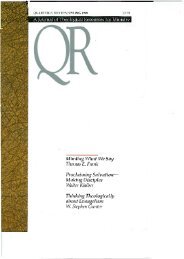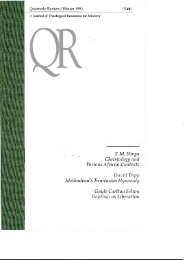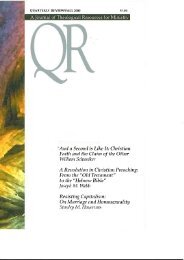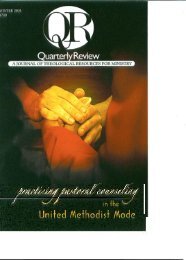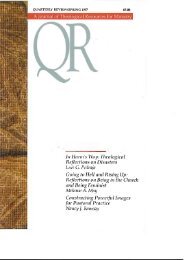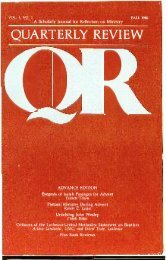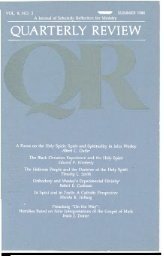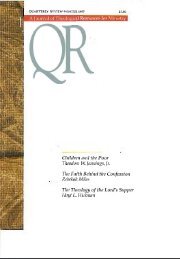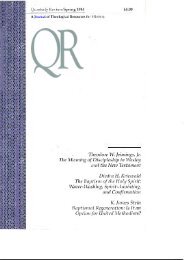Winter 1984 - 1985 - Quarterly Review
Winter 1984 - 1985 - Quarterly Review
Winter 1984 - 1985 - Quarterly Review
You also want an ePaper? Increase the reach of your titles
YUMPU automatically turns print PDFs into web optimized ePapers that Google loves.
QUARTERLY REVIEW, WINTER <strong>1984</strong><br />
was the replacement of the temple as the central religious institution<br />
in Jewish life with a new organizing center called the synagogue.<br />
Among the contributions of the Pharisees were the<br />
development of the synagogue and the growth of the role of<br />
the rabbi.<br />
Frequently temple and synagogue are employed as synonyms. This<br />
regrettably has the effect of blurring the profound differences in their<br />
basic conception. The temple was seen primarily as the house of God,<br />
the synagogue as the house of the people of God. The distinction was<br />
crucial. The temple served chiefly as a locale for cult and sacrifice. The<br />
synagogue, as developed by Pharisaism, was intended to go far<br />
beyond this goal. It was designed to address the total needs of the<br />
community—prayer, study, justice.<br />
The second innovative feature of the Pharisee revolution was the<br />
growth of the role of the rabbi who gradually replaced the temple<br />
priest as the central religious figure in Judaism. The rabbi's task was to<br />
interpret and, more importantly, to specify the religious obligations<br />
incumbent upon a believing Jew. He was neither prophet nor priest.<br />
Any layman could become a rabbi regardless of his birth. The rabbinic<br />
role was an acquired not an inherited one in Second Temple Judaism.<br />
It was based on the strength of a person's service to the community.<br />
The crucial dimension of the rabbinate that needs careful scrutiny is<br />
the fact that the rabbi was not a cultic figure. His role was one of<br />
instruction and interpretation. What is especially significant about the<br />
rabbinate is its noncultic status. A person whose primary mission<br />
consisted in offering specific interpretations with respect to the<br />
religious and social problems of the day gradually replaced the temple<br />
priest as the principal human symbol and representative of Jewish<br />
religious commitment.<br />
A new appreciation of the synagogue and the rabbinate as<br />
developed by the Pharisees will provide a sound basis for discussions<br />
about lay ministry and about such movements as the "basic<br />
communities" springing up in Latin America and elsewhere. It will<br />
also aid Christian self-understanding in other central areas such as<br />
eucharistic theology, the theological meaning of tradition, afterlife,<br />
and social ethics.<br />
In view of this positive link between Christianity and Pharisaism we<br />
30



